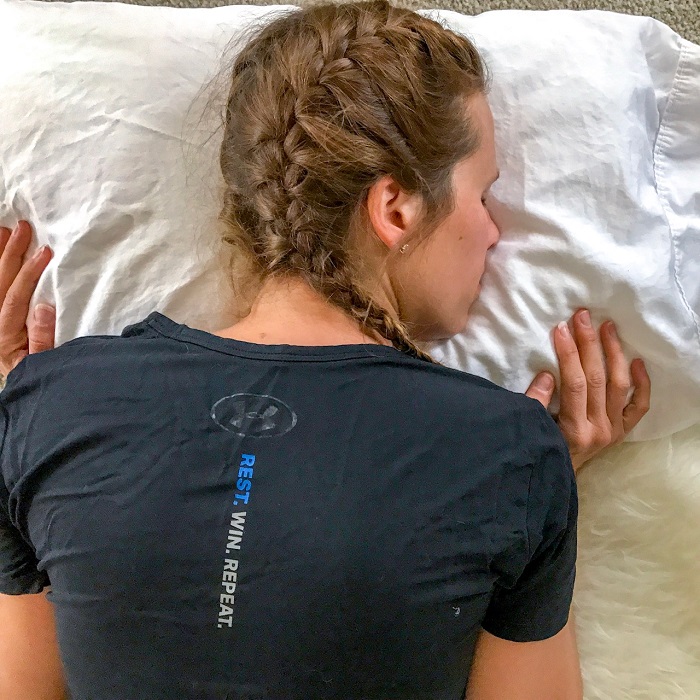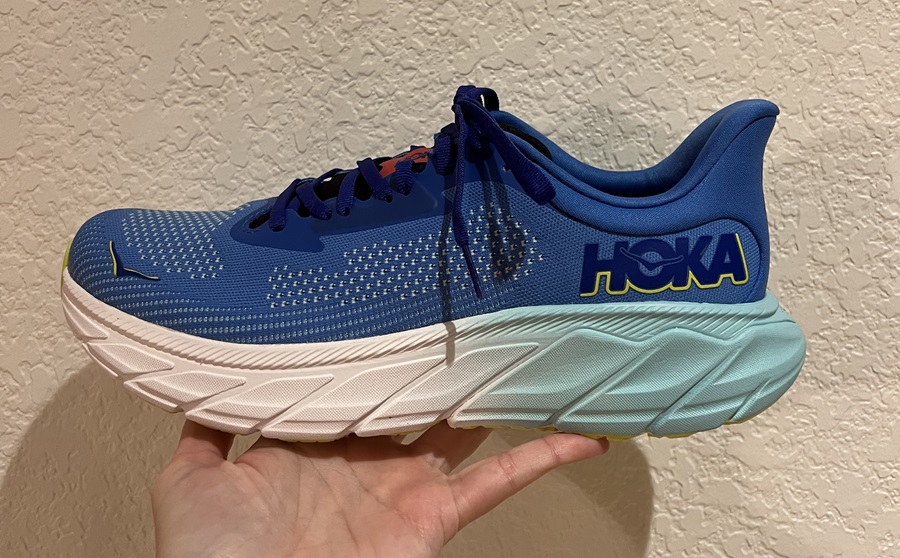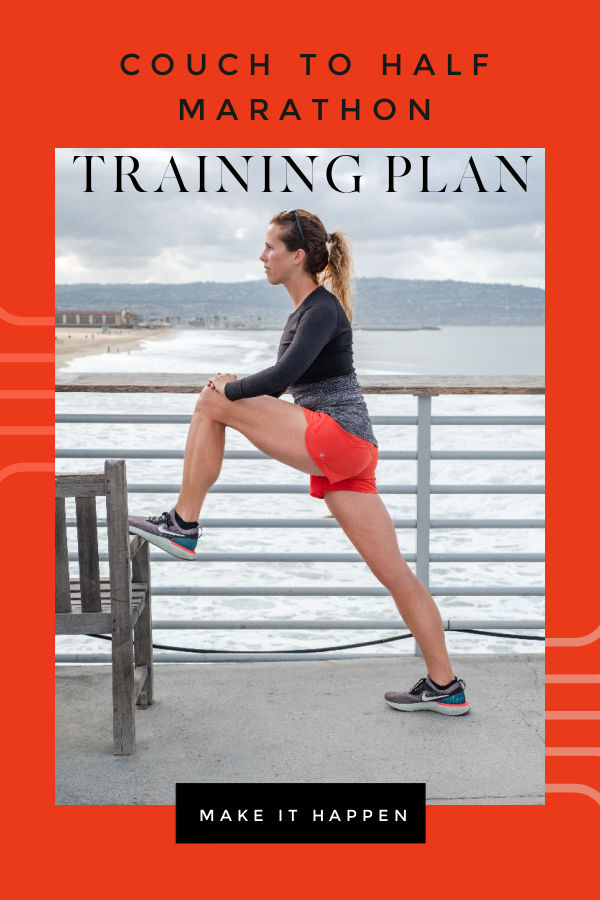As a running coach now, the idea of couch to half marathon initially sounds like a bad idea. But the truth is that my very first race ever in 2002 was a half marathon! So today I’m sharing with you a couch to half training plan and breaking down all the pieces you need to be successful.
I was active prior to that first race, but also someone who faked knee pain to get out of running.
So yup, I basically was indeed going from 0 to 13.1.
While going all the way from the couch to a half marathon might, at first seem daunting, it really can be one of the best things you ever do for yourself! It proves to you that you can do hard things and there’s this really amazing internal feeling of having challenged yourself.
Training for a half marathon can boost your confidence, increase your energy levels, improve your daily mood and, also, make you feel more fit and strong as each day passes.
Ok enough of the mush, let’s get to what you really want to know!
To make this seamless and fun, my couch to half marathon training plan is broken up into specific parts where you’ll be achieving a goal in each of them!
How long does it take to go from Couch to Half Marathon?
In my plan, you need at least 20 weeks. While I believe it’s possible to do in 12-15 weeks, especially if you have some kind of base, as a long time running coach this is where I’ve seen people be truly successful.
They’re able to complete the entire program injury-free, without feeling overwhelmed and don’t hate running once the race is done! Remember that while your brain might be pushing for faster, your bones, muscles, tendons and ligaments need time to adapt to the intensity of running.
I’ve seen folks say that if you can do a 5K right now, then 8 weeks later you should be ready for a half marathon.
Probably. But it’s not ideal and it’s not what I’m interested in promoting.
So if you want a how to run a half with no training or in just a few weeks plan…probably gonna need to look to a different running coach.
My plan is designed to help you make running a habit in a sustainable and safe way. We’ll gradually increase your mileage and amp up the training to get you all ready for the half marathon.
Who is the Couch to Half Marathon plan for?
I’ve personally designed this so that it can be used by the brand new runner, the person calling themselves out of shape and scaled up for someone who has some fitness, but isn’t really running.
So, whether you’re literally starting from the couch, or you’re currently partaking in other fitness activities this is the couch to half marathon plan for you.
Many people feel that the ‘couch’ to half marathon plan is not literal, but it truly is in this case.
We all come from different fitness backgrounds and have different endurance levels, but this plan will get you across the finish line in the most fun and safest way possible.
Couch to Half Marathon Training Plan
Here I’ll explain everything you need to know to follow along with my training plan. I’ve broken up this half marathon training schedule into 4 distinct phases, each designed to help you achieve mini-goals along the way.
There’s a handy spreadsheet you can download and print as well!
Like I mentioned earlier, this plan is designed to run 20 weeks and starts out by utilizing the run-walk method.
You’ll see that I’ve added strength training and cross-training days to this plan. These are not a mere recommendation, but a true part of the plan.
Running without the other two pieces makes it harder to make progress and often ensures injuries.
Let’s look at each of the four phases one by one to know exactly how you’ll progress through them and what goals each of them serves.
Weeks 1 – 5: Base Building Phase
This is the first phase, and it entails building your base, becoming stronger, and building endurance over the first five weeks. It’s a lot of easy running and mainly involves the run-walk method I mentioned earlier.
Remember to always do a warm up prior to every run, as this will help your endurance and ensure injury prevention from the get-go.
The goal is to have a strong base we can build upon in the coming weeks. It is absolutely essential for beginners. Midway through these five weeks, you’ll already start feeling the positive effects of running.
- Example of a good dynamic warm up (this will help improve your endurance)
- Don’t get fixated on your run walk intervals needing to be longer, just focus on how not gasping for air during your run segments
- Any additional time you spend on your feet walking after the run will also help with endurance
- Ideas for strength training below
Weeks 6 – 10: Increasing Mileage Phase
These are the weeks we start to increase mileage. We’ll also be adding some basic speed components. Hills are a proven way to build speed, so I know they don’t sound fun…but do them anyways.
By the end of week 7, you’ll achieve the goal of completing a 5K! Take out heavy strength training that week so you can feel strong to do your 5K over the weekend.
By week 8, we’ll slightly cut back to recover before we start building again. After any run, you can spend more time walking as time on your feet will build endurance.
- We’re increasing your run/walk intervals, but if they feel too hard just stick with what’s been working
- The goal is to hit the total time for the workout and increase your total run/walk volume
- The 5K and 10K goals are good days to push yourself and break up the training.
Weeks 11 – 15: More Race Specific Training Phase
This is the piece of training that becomes more race-specific and is not the time to start slacking on your miles. I know the months are starting to drag on, but your fitness is building and building!
It’s when things start getting even more interesting! Week 11 is what we call a peak weak – it’s a bigger week then recovery before doing your 10K!
During week 13, we’ll have a bit more recovery and over the weekend your goal will be to complete a 10K! Use the run-walk intervals that have felt best to you for this.
By week 15, we will be doing hill repeats – do these at the end of your run. Take lots of time to walk down and recover between repeats. If training on a treadmill, try a 5-7% incline.
- Hill repeats are an ideal way to improve your leg strength and speed with a very low injury risk
- Remember doing more than assigned on the plan is a good way to burn out or be injured before the end
- Your 10K time can help to predict your pace for the half marathon
- Your long runs are definitely over 90 minutes now, so make sure you are practicing your half marathon fueling
Weeks 16 – 20: Becoming Race-Ready Phase
In this last phase, we’re hitting the peak of training, which means your highest mileage, and then moving in to taper prior to race day to ensure that your muscles are fully recovered and primed to perform.
By week 16, your training will start getting a bit more challenging, but even more fulfilling. Using effort is an ideal way to start getting used to how different paces feel and not being tied to a pace because every day feels different.
Week 18 will be another peak week before tapering to race day. Taper is an important time of letting your body recover to feel your best on race day, don’t do anything extra!
For the last two weeks, drop any heavy strength exercises for optimal recovery. By the end of week 20, you should have completed your first half marathon!
- Learn more about why half marathon taper is important for your best race
- Get a half marathon race day check list to help ease nerves and make sure you forget nothing
What Should You Do for Strength Training on This Plan?
In this plan, there are only 2 days laid out for strength training, so you’ll want to make them full body days. If you’re already doing more strength training then 100% keep going. Just remember that you’ll want to cut out lifting for race week to optimize recovery.
These workouts can be 20-30 minutes and don’t need to include cardio, you’re getting plenty of that.
During these sessions you’ll be helping to prevent knee pain, improve endurance and add muscle that often helps us get those running for weight loss goals.
- Upper Body Strength Training
- Full Body Workout
- Glute strength for runners
- 10 Best Strength Moves for Runners
- Core Workout for Runners
- Stability Ball Workout
What About Rest Days on Couch to Half?
While there is only 1 planned rest day, if you’re tired then take another!
Anticipate that there will be some muscle fatigue and soreness as you start doing something new. BUT PAIN is different than simply feeling sore and you know the difference, so don’t keep pushing through actual pain.
Rest days can be complete rest or active recovery days.
- Active recovery days help you stick to a schedule.
- Same time you would have run, you do 10 minutes of hip mobility or foam rolling.
- A thing in motion stays in motion.
- It alleviates your fears about not doing anything.
- REST is when the body grows from the work you do, it is part of training.
You can’t neglect sleep.
It’s free. It’s proven by many studies to be your BEST TOOL for improving performance.
Rest is when your body adapts to the hard work, so enjoy those off days.
5 Tips to Guarantee Your Success in the Couch to Half Marathon Plan
All right, let’s talk about a few more keys to conquer 13.1 miles for the first time. Following this 20 week half marathon training plan your body will be ready, but let’s help get your mind on board with all the things as well.
1. Start Slow
Ever heard of the saying, slow and steady wins the race? Well, that’s exactly how I recommend you start off with this plan!
In my plan, you’re going to first start by utilizing the run-walk method and then slowly progress to longer runs.
The goal of the run-walk method is to combine running intervals with walking breaks, so you don’t get too tired at first. This will allow it to be challenging, yet sustainable.
The last thing I want is for you to feel disheartened in the first few weeks and not be able to carry on with the plan. This method will allow you to build confidence while allowing your body to get used to the habit of running.
This way you can make sure your form is correct, be more aware of how your body is feeling and reacting to this new addition of activity in your life, and build the confidence that will help you cross the finish line on race day.
Checkout this half marathon pace chart, to figure out your potential finishing time based on your per mile average.
2. Be Consistent
One of the most important things that will get you to the finish line is consistency.
Stay excited about your goal and keep showing up for yourself day after day.
As the weeks go by, you’ll start feeling all the positive effects of running more and more. As your confidence builds stronger than ever, you’ll start believing that this goal is, in fact, attainable.
As you run regularly, your endurance will improve. You’ll be able to run faster for longer periods of time. Consistency, not intensity, is the key to running when you’re just starting off.
3. Get the Right Gear
When you’re starting off, having the right gear is essential as you move through the plan. Wearing the wrong shoes can lead to injury and not allow you to follow through with your half-marathon dream.
Checkout some ideas for the best running shoes for beginners and remember NOTHING NEW RACE WEEK.
Ideally you want to have a few weeks of running in your shoes before race day. This way, you won’t have any unexpected surprises on race day such as chafing or running blisters.
The truth is that beyond your shoes, there is a lot of gear you could get.
But the most important factor in your race day success is showing up week after week and putting in the miles.
Training for a half-marathon requires 20 weeks that all boil down to one single day – and you don’t get to pick the weather or conditions for it! Having the right gear can help mitigate some of those potential issues.
- What to Wear for a Half Marathon >>
- Best GPS Watch for Beginners >>
- How to Find Cheap Running Gear >>
4. Fuel Up for Race Day
Running burns a lot of calories in a short amount of time, which of course gets us excited about eating more. BUUTTTT, it’s really about eating more of the right foods for sustained energy, enhancing your workout recovery and improving your performance.
Part 1: Eating Before a Run
Small pre-workout snacks include avocado on toast, half a banana with a tablespoon of your favorite nut butter such as almond butter or peanut butter, and some protein pancakes.
These are just three examples, for more ideas for what to eat before a run you can head out to my handy guide here:
For race day, it’s important to know that not all carbs, not even all complex carbohydrates, are created equally in how they affect our bodies and our running.
What you eat the day before and the day of a run directly impacts how your stomach will behave during your workout. Even more so, your nutrition and fueling during the entire length of a training cycle will affect your GI system on race day.
This easy-to-understand guide for what to eat before a race is your answer to it all.
Part 2: Eating During the Run
Did you know that part of the reason you might be ravenous later or struggle with energy the next day is from not eating during your long run?
Anytime you’re getting up to 90 minutes, we want to start practicing fueling. Reminder that fueling includes hydration!
- Electrolyte powders can help to prevent cramps and feeling nauseous
- Sensitive stomach running fuel ideas to help you start eating on the run
- Rule of thumb is 30-60 grams of carbohydrate per hour you are out exercising
- For a 90 minute day, try taking your fuel about half way through
Part 3: Eating for Recovery
Once you finish your run, remember that it’s important to get in protein to help kick start recovery.
Maybe one of my favorite things about that first half marathon was it helped me to look at food differently. Suddenly it was just about calories, but nutrients that would help me to feel better.
5. Be Flexible In Your Schedule
And last, but not least, learn to be flexible throughout this whole journey to finishing your first half marathon.
This program is designed to last 20 weeks and take you from couch to across the finish line.
But sometimes, life happens. It could be that you caught a cold, have extra work at home that needs to be dealt with first, or, maybe, your body tells you it needs an extra day to heal.
Regardless of what it is, as long as you’re consistent yet flexible enough to feel your body and know what it’s telling you, I’m sure you’ll complete these training runs successfully.
What else do you need to know?!
I mean so much goes in to from couch to half marathon training.
And I have TON more articles filled with tips, but the biggest thing is simply showing up. Stay excited about your goal and keep showing up for yourself day, after day.
Consistency is the thing that will get you to the finish line. Reach out to me on any of my social media channels, or comment down below if you have any questions.
I know you can do this – now download a copy of my Couch to Half Marathon Plan and head out!
✳️Get more half marathon training tips!
Other ways to connect with Amanda
Instagram Daily Run Fun: RunToTheFinish
Facebook Community Chatter: RunToTheFinish
Get more running tips: Pinterest








 9 Best Running Shoes For Beginners
9 Best Running Shoes For Beginners
